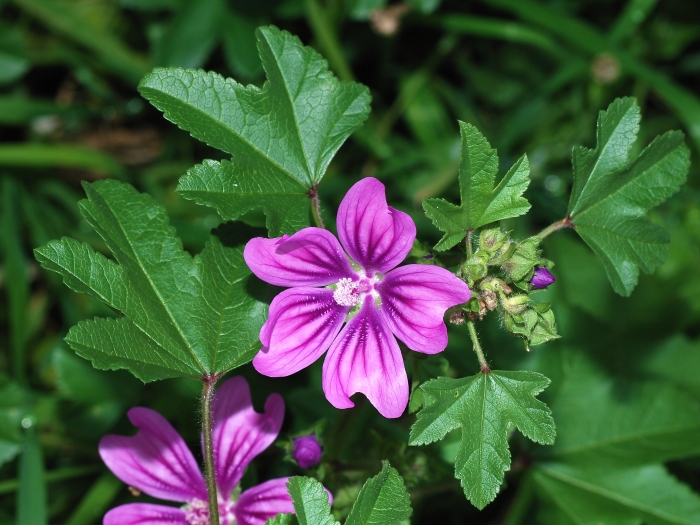Common Mallow
(Malva sylvestris)
Common Mallow (Malva sylvestris)
/
/

Alvesgaspar
CC BY-SA 3.0




















































Estimated Native Range
Summary
Common Mallow is appreciated for its ease of maintenance and its ability to attract pollinators with its nectar-rich flowers. It is often used in wildflower gardens, as a border plant, or for naturalizing areas. It thrives in full sun to part shade and prefers soils with good drainage, though it is adaptable to various soil types. While generally not invasive, it can self-seed prolifically under ideal conditions. To prevent unwanted spread, deadheading spent flowers may be necessary.CC BY-SA 4.0
Plant Description
- Plant Type: Herb
- Height: 2-4 feet
- Width: 2-3 feet
- Growth Rate: Rapid
- Flower Color: Pink, Purple
- Flowering Season: Summer, Fall
- Leaf Retention: Deciduous
Growth Requirements
- Sun: Full Sun, Part Shade
- Water: Medium
- Drainage: Slow, Medium, Fast
Common Uses
Bee Garden, Bird Garden, Butterfly Garden, Deer Resistant, Drought Tolerant, Edible*Disclaimer: Easyscape's listed plant edibility is for informational use. Always verify the safety and proper identification of any plant before consumption., Groundcover, Hummingbird Garden, Rabbit Resistant, Showy Flowers, Street Planting
Natural Habitat
Native to meadows, fields, and the margins of forests and grasslands across Europe, Asia, and North Africa
Other Names
Common Names: Cheeses, High Mallow, Forest Mallow, Tall Mallow, Tree Mallow, Wood Mallow, Blue Mallow, Garden Mallow, High Cheeseweed, Purple Mallow
Scientific Names: , Malva sylvestris, Malva rotundifolia, Malva erecta, Malva ambigua, Malva plebeja, Malva martrinii, Malva vivianiana, Malva sylvestris subsp. ambigua, Malva glabra
GBIF Accepted Name: Malva sylvestris L.